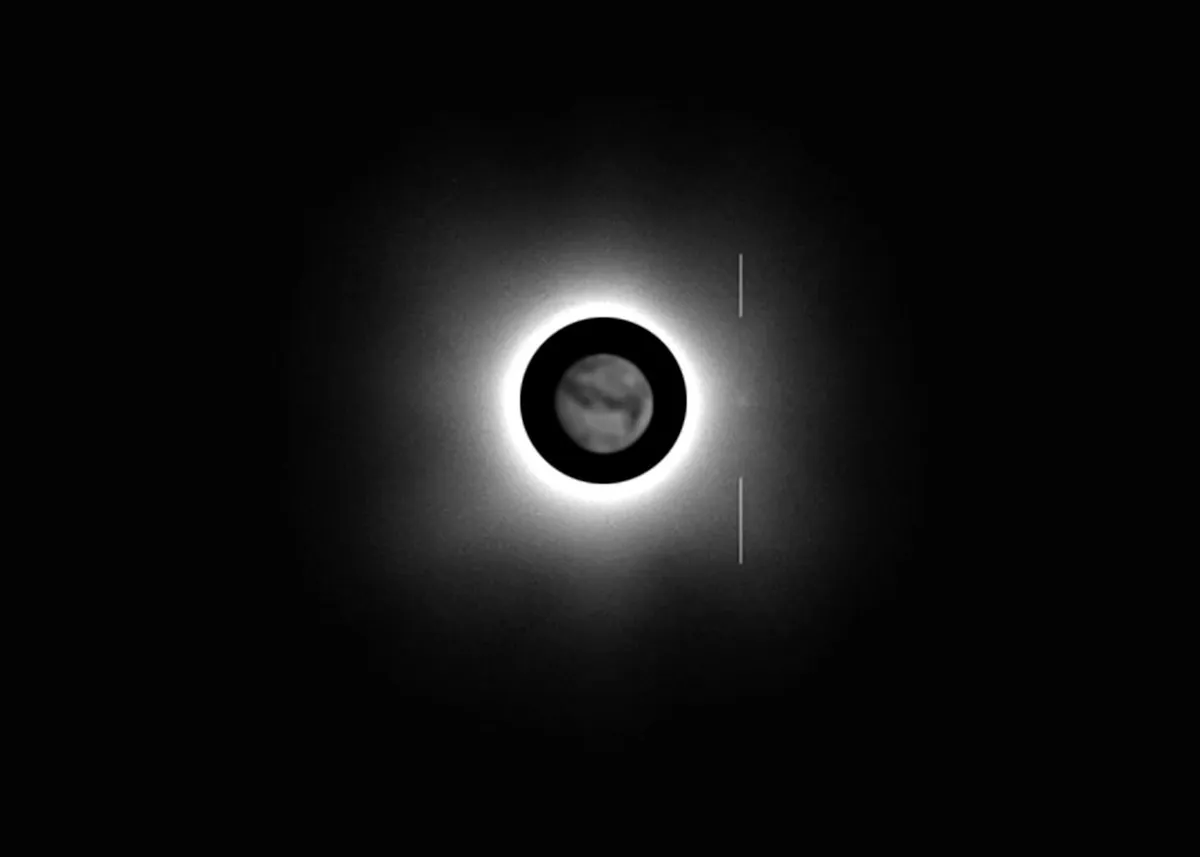Mars has two tiny moons, Phobos and Deimos, and a good challenge is to try and see or photograph them. With Mars approaching opposition on 13 October, the latter half of 2020 is going to be a good time to take up the challenge.
When we say the moons of Mars are tiny, we aren’t joking. Inner moon Phobos measures 27 x 22 x 18km, while Deimos is just 15 x 12 x 11km.
They both keep pretty close to the Red Planet as well: Phobos’s orbit has a mean radius of 9,376km (2.76 Mars radii) and that of Deimos is 23,463km (6.92 Mars radii).
At opposition Mars will appear 22.6 arcseconds across, while Phobos is able to appear 30 arcseconds from the planet’s centre and Deimos 77 arcseconds.
When Mars is well away from opposition, the moons are too faint and close to the planet to be viable targets, but when it approaches a favourable opposition, the story is somewhat different.
First, let’s deal with their brightness; Phobos shines at mag. 10.7, while Deimos is a bit fainter at mag. 11.8. Two faint dots orbiting a bright host makes recording them that much harder.
To stand the best chance of seeing or photographing the moons, you’ll need an image scale showing the disc of Mars clearly.

The moons will be easiest to see when close to an eastern or western elongation, in other words when they appear furthest from the planet.
Phobos orbits Mars once every 7 hours 39.2 minutes, while Deimos, being further out, takes longer at 30.3 hours.
For Phobos there will be several viable elongations every night, while it may take several nights to get lucky with Deimos.
There are a number of programs and apps that can be used to show you where the Moons are relative to the Red Planet; the free WinJUPOS software is a good example for Windows-based computers.

Visually there is a way to help you see both moons when close to an elongation. Attach a thin strip of paper or aluminium foil to the focal plane of your chosen eyepiece to create an optical device known as an occulting bar (pictured above).
This will give you something to hide Mars behind. The focal plane of an eyepiece is normally marked by a ring called the field stop; the bar should be attached to this.
In use, simply position the bar north-south, hide Mars behind it and if they’re there, the moons should be a lot easier to spot.
If you intend to use a camera, Mars will need to be overexposed. The trick is to overexpose the planet while trying to keep the level of overexposure low enough to stop it spreading over the regions where the moons will be located.
Have you managed to photograph the moons of Mars? We'd love to see your images. Find out how to send us your astrophotos, or get in touch via Facebook, Twitter and Instagram.
Pete Lawrence is an experienced astronomer and a co-host of The Sky at Night. This guide originally appeared in the September 2020 issue of BBC Sky at Night Magazine.
